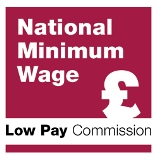LPC 2020 consultation questions
Updated 5 June 2020
1. About you
1) Please provide information about yourself or your organisation. If possible, include details about your location, the occupation or sector you are involved in, your workforce if you are an employer (including number of National Minimum Wage (NMW) or National Living Wage (NLW) workers), and anything else you think is relevant.
2. Economic outlook
2) What are your views on the economic outlook and business conditions in the UK for the period up to April 2021? We are particularly interested in views on the following:
-
Conditions in the specific sector(s) in which you operate, as well as for the economy in general.
-
Any factors likely to boost demand, or alternatively that could make conditions more difficult (for example, the impact of the current coronavirus outbreak or changes in the UK’s relationship with the European Union).
-
The current state of the labour market, recruitment and retention, as well as the potential impact of changes to immigration rules.
-
The experience of wage growth and inflation in the last year and forecasts for the next couple of years.
3) Apart from the minimum wage, what other factors affect workers in low-paying sectors and occupations? Among other things, we are interested in evidence and views on:
- The effect on workers of Universal Credit and other rules around benefits and tax.
- The relationship between the minimum wage and weekly income.
- Access to transport and the effects this has on working life.
3. The National Living Wage
4) What has been the impact of the NLW since April 2016? Our critical interest is in evidence on the NLW’s effects on employment, hours and earnings. We are also very interested in the NLW’s effects in the following areas:
-
Prices and profits
-
Productivity
-
Pay structures and differentials
-
Wider benefits available to workers (including premium pay and non-pay benefits across the workforce)
-
Quality of work, including contract types, flexibility and work intensification
-
Progression and job moves
-
Training
-
Investment
5) To what extent has the NLW particularly affected certain occupations or industries, types of firms (small, large etc), regions or groups (for example women, ethnic minorities, migrant workers etc)?
6) The Government has set a new remit for the NLW based on achieving a target of two-thirds of median earnings by 2024. Based on forecasts, our current central projection for the April 2024 NLW rate is £10.69, with a likely range of 30 pence above and below this figure. What are your views on this target and on the LPC’s approach to this new remit?
7) How will employers respond to the lowering of the NLW age threshold to 23?
8) What factors should we consider in recommending a date for reducing the NLW age threshold to 21?
9) At what level should the NLW be set from April 2021? Our current central projection for the on-course rate is £9.21, with a likely range of 6 pence above or below this figure.
4. Young people
10) What do you think has been the effect of the minimum wage on young people and on their employment prospects?
11) Lowering the NLW age threshold to 23 means the creation of a new 21-22 Year Old Rate, until the NLW age threshold is lowered again to 21.
-
What should be our approach to this rate?
-
To what extent will employers use the new 21-22 Year Old Rate when it is introduced next year?
-
At what level should it be set?
12) At what level should each of the other NMW youth rates (the 18-20 Year Old Rate and the 16-17 Year Old Rate) be set from April 2021?
5. Apprentices
13) As set out in the box above and in Annex 2 below, the evidence suggests that underpayment of apprentices is high and unpaid training hours are the central cause of this. What are your views on the extent of this problem and solutions to it?
14) In response to feedback from a range of groups, one of the options we are considering is raising the Apprentice Rate so it aligns with the 16-17 Year Old Rate. The main groups affected by this would be younger apprentices – 16-18 year olds. What would be the effect of this change on the pay, provision and take-up of apprenticeship places, and training volume and quality for those apprentices affected?
15) For older apprentices, the level of the Apprentice Rate is less relevant. But there is evidence that some employers still ‘use’ the rate by paying their apprentices below the NMW. What effect do the Apprentice Rate and the other NMW rates have on apprenticeships for older (those aged 21 and over) apprentices? Please consider the pay, provision and take-up of apprenticeship places, and training volume and quality.
16) Do you have any additional evidence on the effect of the Apprentice Rate and the impact of recent upratings?
6. Compliance and enforcement
17) What issues are there with compliance with the minimum wage and what could be done to address these?
18) What comments do you have on HMRC’s enforcement work?
19) What are your views on the Accommodation Offset? What difference, if any, have recent increases in the rate made to the provision of accommodation? If a worker in employer-provided accommodation, have the recent sharp increases led to any hardship?

